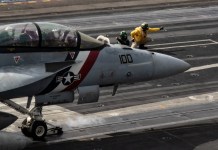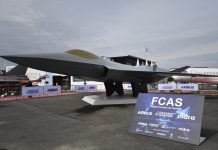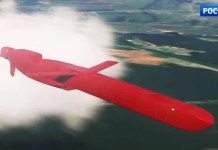At a time when India has cut its defense imports by a whopping 33%, thanks to the Modi government’s Make-in-India push, its neighbor Pakistan has been on a shopping spree, the latest report by the Stockholm International Peace Research Institute (SIPRI) shows.
According to the report, Pakistan emerged as one of the largest arms importers in the Asia-Pacific between 2016 and 2020. Globally, the South Asian nation ranked 10th as it accounted for 2.7% of major defense imports.
The dip in India’s weapon purchases has been attributed to New Delhi’s efforts to reduce its dependence on Russian arms as well as a complex procurement process.
According to the report, New Delhi’s top three arms suppliers during 2016-20 were Russia, which accounted for 49% of total imports, followed by France 18%, and Israel 13% during 2016-20.
While India is planning large-scale imports in the coming years, it has significantly reduced reliance on Russia and the United States.
“Russia was the most affected supplier, although India’s imports of US arms also fell by 46%,” said the report.
In contrast, Pakistan has imported about eight large arms or weapons systems from five different nations during 2016-20 with an aim to improve and enhance the capabilities of the Pakistani Air Force (PAF) and Navy.
Pak’s Major Arms Purchases
So, what all has Pakistan imported? Pakistan has procured second-hand Mirage 5 supersonic aircraft from Egypt. It has also bought AgustaWestland AW139 helicopters from Italy and Mi-35M attack helicopters and a transport plane from Russia.
As per the SIPRI report, the country has imported three different types of anti-ship and anti-tank missiles from China. Other than that, it has acquired large quantities of small arms including naval guns, bombs, ammunition, tanks, and anti-ship missiles, and surface-to-air missiles.
Pakistan’s major share of imports comes from its ‘iron brother’ China, accounting for about 74% of the country’s imports, followed by Russia 6.6% and Italy 5.9%.
The country is heavily dependent on China, which has provided the Islamic nation with two different types of JF-17 fighter jets. It has also acquired Type 041 / Yuan submarines and Type 054-A warships (frigates) from Beijing, with both being developed within Pakistan.
The Pakistan Military Industrial Complex has acquired the capability to manufacture naval warships, submarines, fighter jets, and helicopters locally at the Karachi Dockyard and Aeronautical Complex Kamra.
The Pakistan Ordnance Factories (POF), a major firearm, defense contractor, and military corporation headquartered in Wah Cantt, also has the potential to develop small arms and ammunition.
Most parts are imported from other nations, but the final defense product is assembled and manufactured indigenously.
Turkey is another major military partner of Pakistan with the latter importing MILGEM warships from the Middle-Eastern nation.

In 2018, Pakistan had signed a $1.5-billion deal with Turkey to purchase 30 Turkish-made T129 Atak helicopters to replace its fleet of Bell AH-1 Cobra choppers.
However, Pentagon’s refusal to issue export licenses for T129 Atak helicopter engines and other parts made in the US has delayed the delivery of the choppers.
According to the latest media reports, Pakistan has offered another extension to Turkey, giving the country a period of six months to deliver the helicopters.
“We have obtained a six-month extension from Pakistan,” said Turkey’s top procurement official, Ismail Demir, while speaking to a US defense publication.
According to experts, Pakistan has been making an effort to strengthen its military capabilities since the 2019 air skirmished with India.
The entire episode was seen as a victory for India, with the Pakistan-China jointly developed JF-17 Thunder fighter jets failing to meet the desired standards during the aerial duel.
Follow EurAsian Times on Google News




